To boost your air heater's performance, start by optimizing panel placement in cold areas, avoiding furniture blockage. Next, enhance insulation and sealing throughout your home, addressing air leaks and gaps. Improve air circulation by keeping vents clear and using ceiling fans to distribute warm air. Regular cleaning and maintenance, including filter replacements and ductwork inspections, are essential for efficiency. Finally, consider upgrading to high-performance absorber materials for better heat transfer. These expert tips will not only create a cozier living space but also help slash your energy bills. Dive deeper to uncover the full potential of your heating system.
Optimize Panel Placement

Position matters when it comes to your air heater panels. To maximize efficiency, place them strategically around your space. Start by identifying the coldest areas in your room, typically near windows or exterior walls. Install panels in these spots to counteract heat loss and create a more uniform temperature distribution.
Consider the layout of your furniture when positioning panels. Avoid blocking them with large objects, as this can impede airflow and reduce heating effectiveness. Instead, mount panels on walls with clear space in front of them, allowing warm air to circulate freely.
For peak performance, install panels at least 6 inches below the ceiling. This placement helps prevent hot air from getting trapped near the top of the room. In larger spaces, distribute multiple panels evenly to guarantee consistent heating throughout the area.
Don't forget about safety considerations. Keep panels away from flammable materials and out of reach of children and pets. If you're unsure about placement, consult a professional installer who can assess your space and recommend the best locations for your air heater panels.
Enhance Insulation and Sealing
While ideal panel placement is important, your air heater's performance also depends heavily on your home's insulation and sealing. Proper insulation prevents heat loss, allowing your heater to work more efficiently and maintain a comfortable temperature.
Start by inspecting your walls, attic, and floors for gaps or inadequate insulation. Add or replace insulation where needed, focusing on areas prone to heat loss like attics and crawl spaces.
Next, address air leaks around windows, doors, and other openings. Use weatherstripping, caulk, or foam sealant to close gaps and prevent drafts.
Don't forget to check for leaks in your ductwork, as these can greatly reduce your heater's efficiency. Seal any gaps with mastic sealant or metal-backed tape.
Consider installing double-pane windows or adding insulating window treatments to further reduce heat loss.
Additionally, verify your home's vapor barrier is intact to prevent moisture buildup, which can compromise insulation effectiveness.
Improve Air Circulation
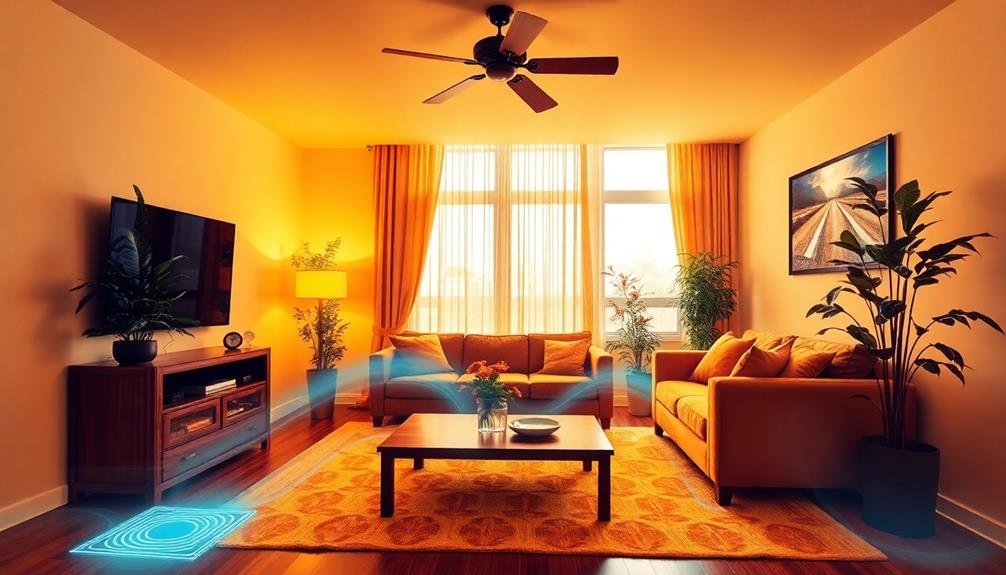
Enhancing air circulation can dramatically boost your air heater's efficiency. By ensuring proper airflow throughout your space, you'll experience more consistent temperatures and reduce the workload on your heating system.
Start by keeping vents and registers clear of obstacles like furniture, curtains, or rugs. Regularly clean or replace air filters to maintain ideal airflow and prevent your heater from working harder than necessary.
Consider using ceiling fans to distribute warm air more evenly. Set them to rotate clockwise at a low speed during winter months, pushing warm air down from the ceiling. For larger spaces, strategically placed floor fans can help move heated air to cooler areas.
To further improve air circulation and heater performance:
- Install a smart thermostat to enhance heating cycles
- Use exhaust fans sparingly to avoid drawing out warm air
- Keep interior doors open to promote air movement between rooms
- Seal ductwork to prevent air leaks and improve distribution
- Consider adding return air vents in rooms lacking proper circulation
Clean and Maintain Regularly
Regular cleaning and maintenance are the cornerstones of ideal air heater performance. To keep your unit running efficiently, you'll need to establish a routine care schedule.
Start by replacing or cleaning the air filter every 1-3 months, depending on usage. A clogged filter forces your heater to work harder, reducing its lifespan and increasing energy consumption.
Next, inspect and clean the blower assembly annually. Remove dust and debris from the fan blades and motor to prevent overheating and guarantee smooth operation.
Don't forget to check the belts for wear and proper tension.
Vacuum the air vents and ducts to remove accumulated dust and allergens. This improves air quality and helps maintain consistent airflow.
Inspect the heat exchanger for cracks or corrosion, as these can lead to carbon monoxide leaks.
Lubricate moving parts as recommended by the manufacturer to reduce friction and prevent premature wear.
Check electrical connections and tighten if necessary to avoid potential fire hazards.
Upgrade Absorber Material

Three key components influence an air heater's efficiency: the heat source, the blower, and the absorber material. While you can't easily change the first two, upgrading the absorber material can greatly boost your air heater's performance.
The absorber is responsible for capturing and transferring heat to the air, making it essential for peak efficiency.
Consider replacing your current absorber with a high-performance material. Modern options offer superior heat absorption and distribution properties. Here are some top choices for upgrading your air heater's absorber material:
- Ceramic-coated copper plates
- Carbon fiber mesh
- Aluminum foam
- Graphene-enhanced polymers
- Phase change materials (PCMs)
These advanced materials can improve heat transfer rates, reduce energy consumption, and enhance overall system efficiency.
When selecting a new absorber, consider factors like thermal conductivity, durability, and compatibility with your existing setup. You'll likely notice improved heating times and more consistent temperature distribution throughout your space.
Remember to consult with a professional or the manufacturer before making any noteworthy changes to guarantee compatibility and maintain your warranty.
Frequently Asked Questions
How Long Does It Take to See Improvements After Implementing These Tips?
You'll notice improvements in your air heater's performance almost immediately after implementing these tips. However, for significant changes in energy efficiency and overall effectiveness, give it about two to four weeks of consistent use.
Are There Any Safety Concerns When Modifying an Air Heater System?
Yes, there are safety concerns when modifying air heater systems. You'll need to be cautious of electrical hazards, gas leaks, and carbon monoxide risks. It's best to consult a professional to guarantee your modifications are safe and compliant.
What's the Average Cost of Upgrading an Air Heater's Absorber Material?
You'll find upgrading your air heater's absorber material costs vary widely, typically ranging from $200 to $800. It depends on the size of your system, material quality, and labor costs. Always get multiple quotes for accurate pricing.
Can These Tips Be Applied to All Types of Air Heaters?
You'll find most of these tips can be applied to various air heater types. However, some might be specific to certain models. It's best to consult your heater's manual or a professional for tailored advice on your unit.
How Often Should Professional Maintenance Be Scheduled for Optimal Performance?
You should schedule professional maintenance for your air heater annually, typically before the heating season begins. If you use it heavily or have an older unit, consider bi-annual check-ups. Don't skip these appointments for peak performance.
In Summary
You've now got the tools to maximize your air heater's efficiency. By optimizing panel placement, boosting insulation, improving circulation, maintaining regularly, and upgrading absorber materials, you'll see a significant boost in performance. Don't hesitate to implement these expert tips – they'll help you save energy and money while enjoying a more comfortable living space. Remember, a well-functioning air heater isn't just about warmth; it's about creating a cozy, efficient home environment you'll love.

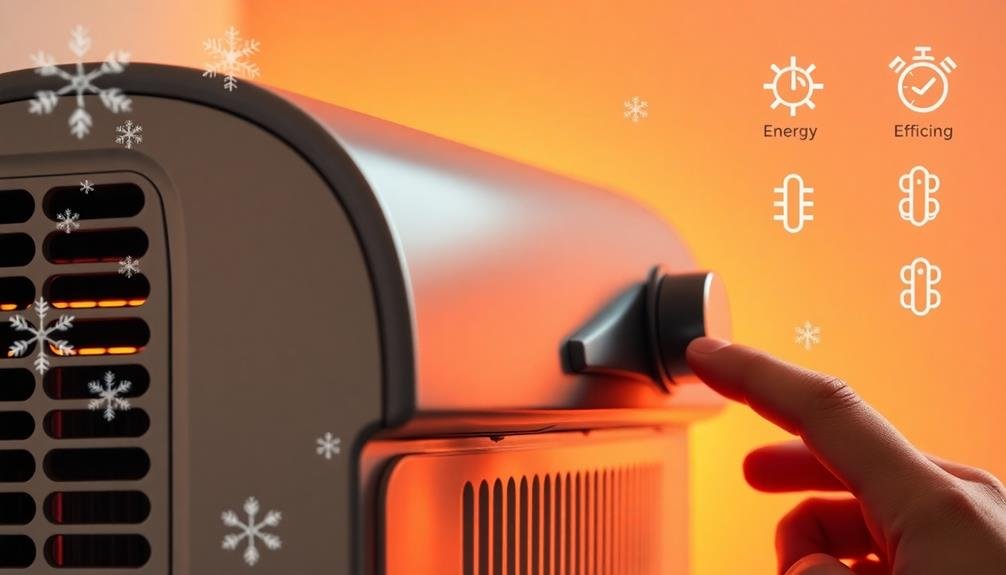
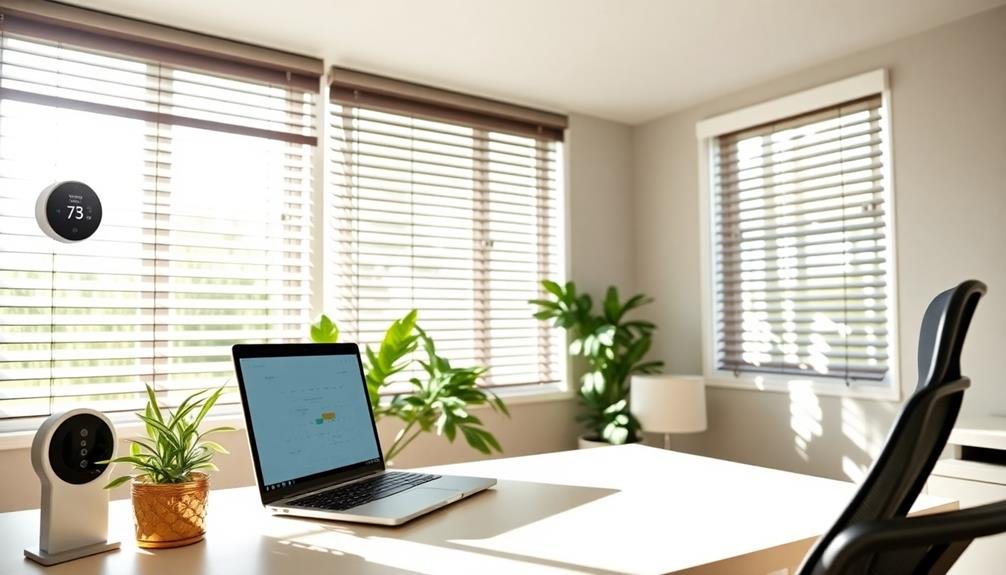
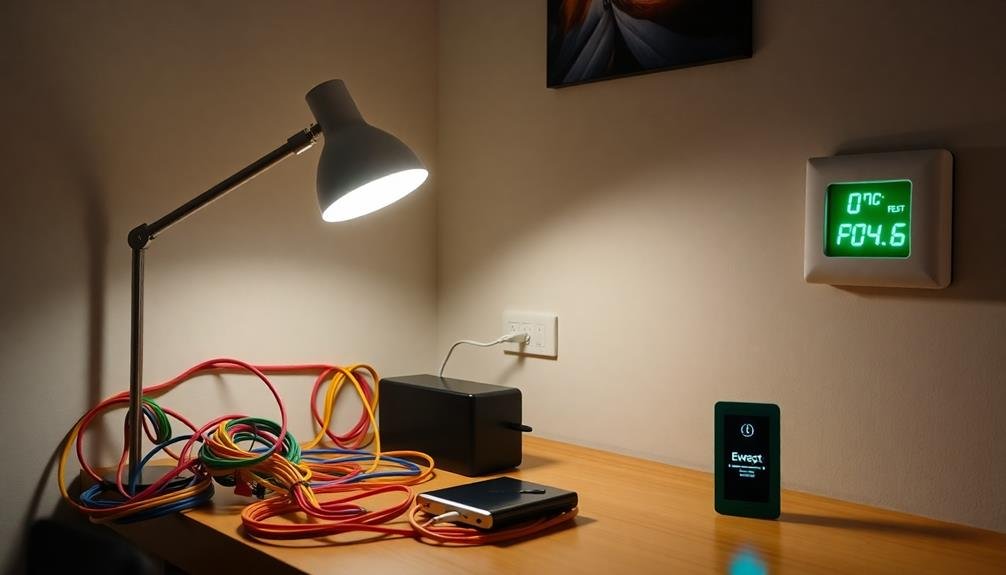
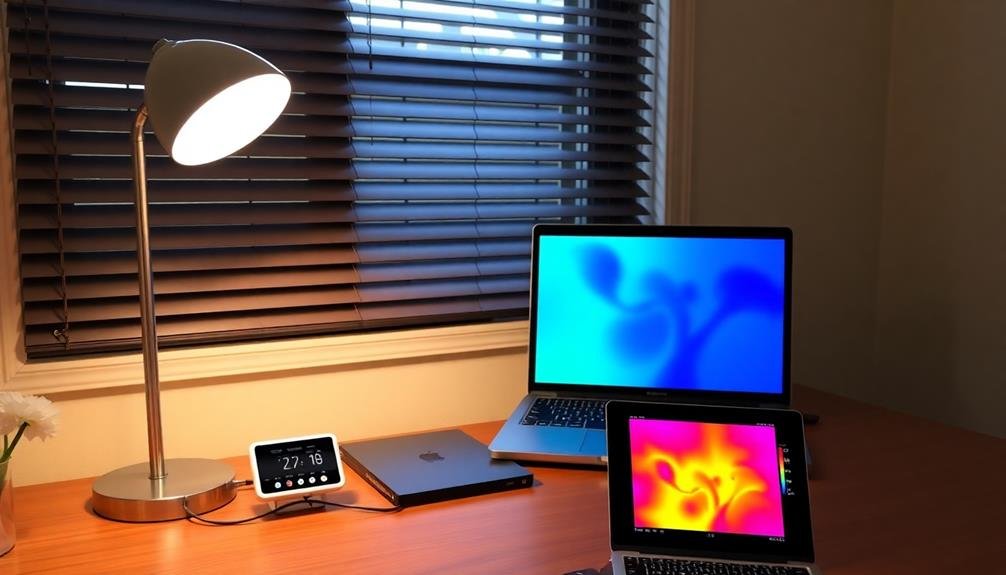
Leave a Reply